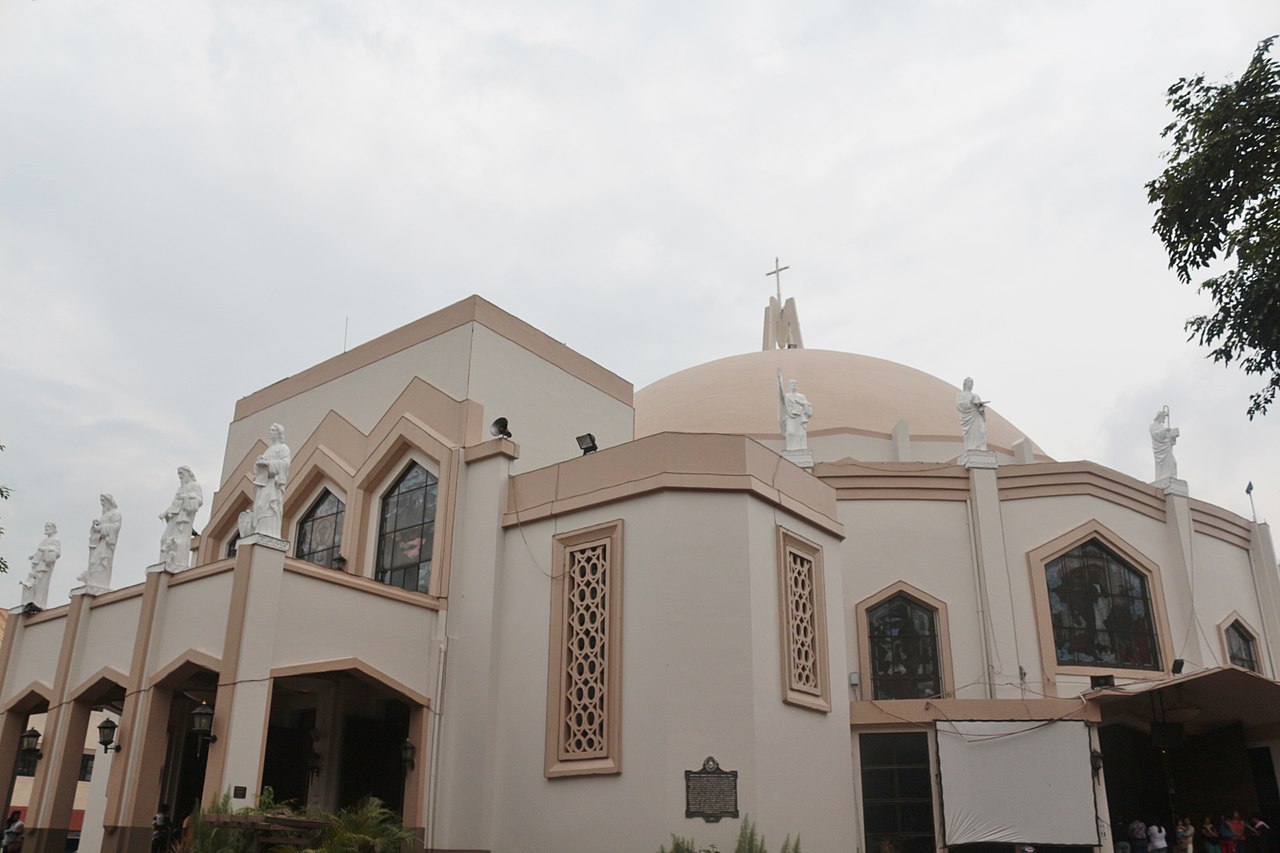
Niño de Tabora, was supposed to be built on a different plot of land.
The church's present location was the site of the tipolo (Artocarpus blancoi), atop which the image was found after mysteriously vanishing several times.
The church was completed in 1632, but suffered severe damage in 1639 when the Sangley (Chinese) set fire to the church in a revolt.
It was restored afterwards though it was damaged by the 1645 Luzon earthquake, and other earthquakes in 1824 and 1863.
Nevertheless, the church became a popular pilgrimage site as many devotees paid reverence to Our Lady of Peace and Good Voyage, including Philippine national hero and polymath José Rizal, who visited the shrine as a boy with his father, Francisco Mercado, on 6 June 1868.

The pair went on pilgrimage to fulfil a vow Rizal's mother, Teodora Alonso, had made when she and the boy survived his delivery.
Towards the end of the Second World War in 1945, the church was destroyed by Allied bombardment meant to liberate the area from the Japanese Imperial control.

After the war, a campaign was organised to build a new church, with the fundraising committee headed by former First Lady Aurora Quezon and Antipolo parish priest, Francisco Avendano. Architect José L. de Ocampo was commissioned to design the new shrine, which was completed in 1954.
On 14 January 1954, the Catholic Bishops Conference of the Philippines declared the new Antipolo Church as declared the National Shrine to Our Lady of Peace and Good Voyage. The church was elevated to the status of cathedral on 25 June 1983, upon the canonical erection of the Diocese of Antipolo.





































No comments:
Post a Comment